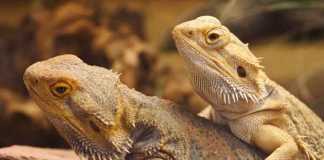
Have you ever visited wild animal markets in exotic countries like Thailand, Indonesia or the Philippines? If you have, you’d surely know how these illegal traders boast and brag of having the rarest snakes and monitor lizard species in the world, with origins in the most remote parts of earth. Well, a recent study may have actually confirmed one of these stories.
A group of scientists from the Biodiversity Institute of the University of Kansas, claim to have identified two new monitor lizard species in the black market of the Philippines. It appears the scientists have spent the last five years trying to catalog all the wild animals that are sold on the Philippine black market. A lot of this black market has moved from the streets of Manila to the webpages of Facebook and other online markets.
The scientists analyzed and bought dozens of animals in hidden alleys and secret websites. They would then perform genetic analysis on the purchased animals, building a database that other researchers and authorities could later on use. However, during their year-long research, the scientists suddenly came upon two monitor lizard species which they couldn’t identify. There was no record of them anywhere in the books. They were two water monitor lizards: One black and white, and the other black and yellow. Their DNA was absolutely new to science.
The Water Monitor Lizard species, known as Varanus salvator, is a big lizard native to South and Southeast Asia. It can grow larger than 1.5-2 m (4.906.6 feet), while the largest Water Monitor Lizard was recorded in Sri Lanka, measuring 3.2 meters (10.5 feet). This unique carnivore lizard, which is an excellent swimmer, defends itself by using its tail, claws and jaws. It will usually eat fish, frogs, birds, crabs, rodents and snakes. Some water monitor lizard species have even been observed devouring on catfish, tearing off chunks of meat with their teeth.
The two new monitor lizard species discovered in the black market of the Philippines, have been named Varanus dalubhasa and Varanus bangonorum.
For more specific details you can read the study at Zootaxa.


